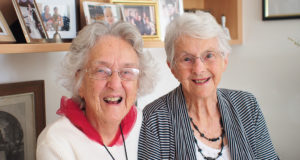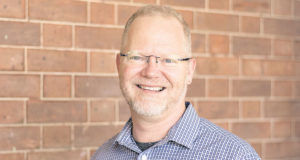St Petersburg in Russia has seen thousands protesting against the return of the Cathedral of St Isaac to the Russian Orthodox Church (ROC) since January this year. How much influence does the church now have in modern Russia and how much do we really know about its leader, Patriarch Kirill? John Harrison investigates.
St Isaac’s Cathedral is the largest Orthodox basilica in the world, built between 1818 and 1858, based on designs by the French-born architect Auguste de Montferrand. In St Petersburg—the true heart of Mother Russia—it holds a special place.
After the Soviet revolution, in 1931 the cathedral became the Museum of the History of Religion and Atheism. After the fall of communism, services resumed in the building in 1990.
Earlier this year, St Petersburg Governor Georgy Poltavchenko announced the UNESCO-listed world heritage listed building would revert to the Russian Orthodox Church. Four million tourists visited in 2016.
An appeal against the handover was dismissed followed by an online petition of more than 200 000 names, and a number of street demonstrations outside the cathedral, one on 18 March involving up to 4000 people.
Both the handover and the protests illustrate the power of the Russian Orthodox Church in post-Soviet Russia.
President Putin and the Orthodox Church share the vision of returning Russia to its former greatness. But not the greatness of the Soviet Union, the greatness of 19th century Tsarist Russia, where church and state were almost indivisible.
One example of this solidarity between the ROC and the Russian state can be found in the escalation of a campaign against the Jehovah’s Witnesses. While there are nearly
10 million Muslims in Russia, there are approximately 170 000 Jehovah’s Witnesses.
The Witnesses are subject to a 2002 catch-all law used to repress dissent. Originating in North America in the 1870s, their consistent conscientious objection to military service makes them a conspicuous target, as does their refusal to participate in other rituals of nationalism and patriotism. Nor do they vote. All very subversive in Putin’s Russia.
While the current Orthodox Church leadership denies any desire to become a state church, there is little room in modern Russia for other religious traditions such as large Muslim, Jewish and Buddhist populations. Arguably, even the evangelicals who flooded into Russia after the fall of communism, and whose conservative theology is congruent with Russian Orthodoxy, are on the outer. A new blasphemy law was introduced in 2013, with three years jail and US$13 000 fine for convicted offenders.
Patriarch Kirill
The Russian Orthodox Church is headed by 70-year-old Patriarch Kirill (Cyril). Born Vladimir Mikhailovich Gundyayev, he is the son and grandson of Orthodox priests. During Stalin’s time, his grandfather spent time in the infamous Solovki prison camp, hauntingly described by Alexander Solzhenitsyn in The Gulag Archipelago.
Kirill graduated in 1970 from the Leningrad Theological Academy and was almost immediately given an appointment at the World Council of Churches in Geneva. He has retained his ecumenical links to the present day. He became primate of the Russian Orthodox Church in 2009. Of the estimated 260 million Orthodox Christians worldwide, the majority are Russian Orthodox.
The role of the Russian Orthodox Church in the new Russia is nothing new. What is significant is its changing relationship with the church of Rome. Unsuccessful attempts had been made to bring the Pope and the patriarch together, once under John Paul II and twice under Benedict.
Finally, in February last year, Kirill, the Russian, and Pope Francis, the Argentinian, met at Havana airport of all places, to issue a remarkable and historic joint declaration. It was the first meeting between leaders of the Eastern and Western churches since the Orthodox split from Rome in 1054 AD.
While media attention on the meeting focused on the persecution of Christians in the Middle East and North Africa, the declaration is a comprehensive theological statement from two of the world’s dominant Christian traditions. While Kirill was criticised for opening the door to acknowledgement of the primacy of Rome, which he denied, the statement is remarkable for its explicit recognition of common ground as well as its frank, yet humble, acknowledgement of both historical and current differences.
The Russians and the Romans share a strong common mind on the issues of homosexuality, abortion and “the family”, a common mind evident in the joint statement. You can read the full statement here.
Kirill is not uncontroversial. There is the mysterious case of the gold Breguet watch photographed on Kirill’s wrist a few years ago. Where did it come from? Why was he wearing it? More substantially, his association with the World Council of Churches has opened him to criticism from conservatives with the ROC. Ironically, his alleged links to the KGB since the 1970s have been no barrier to his progress in post-Soviet Russia.
In what is probably the best study of religion in post-Soviet Russia, Believing in Russia, Geraldine Fagan writes, “In the popular notion of Russian national identity, therefore symbiotic belief in Russia and Orthodoxy is perceived as the glue consolidating the nation’s power.”
Luke Harding, who spent four years in Moscow as correspondent for The Guardian (2007-2011), once told me that Russia represented a greater threat to world peace than the Middle East, principally because of this axis between church and state. He may well be right.
 JourneyOnline
JourneyOnline







